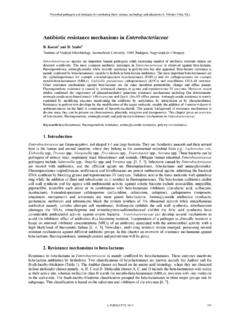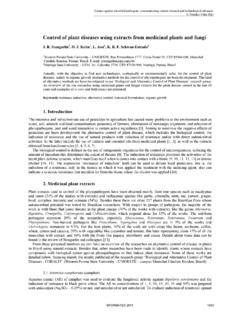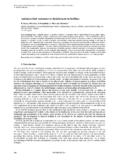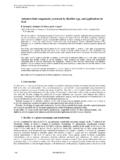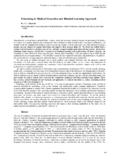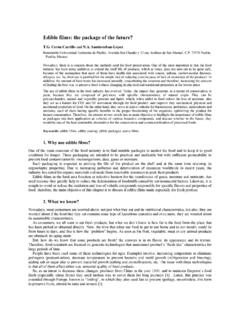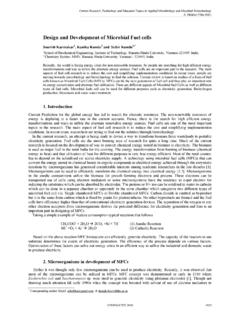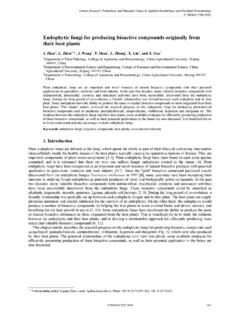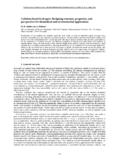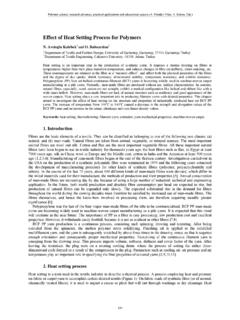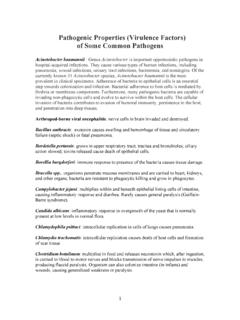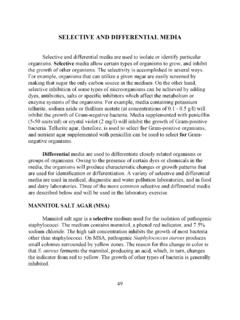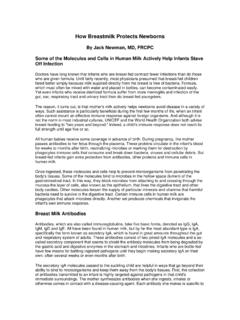Transcription of Antimicrobial Peptides of Probiotic Lactobacillus strains
1 Science against microbial pathogens: communicating current research and technological advances _____. A. M ndez-Vilas (Ed.). Antimicrobial Peptides of Probiotic Lactobacillus strains S. Pithva, P. Ambalam, J. M. Dave, Vyas Department of Biosciences, Saurashtra University, Rajkot 360 005, Gujarat, India; In recent years, numerous food poisoning outbreaks, involving various pathogens and food products, and the increasing concern over the preservation of minimally processed foods have spurred growing awareness of the importance of food safety.
2 This has prompted new approaches to inhibit foodborne pathogens. There has been a rapid worldwide increase in pathogenic bacteria that are resistant to multiple antibiotics. There is, therefore, a pressing need to develop new antibiotics and novel Antimicrobial agents. Under such conditions potential Probiotic cultures could play an important role if taken daily as food adjuncts. In particular, there has been a renewed interest in the Antimicrobial activity of lactic acid bacteria (LAB), which has been important for centuries in the preservation of food.
3 Probiotic Lactobacillus rhamnosus strain shows broad spectrum of activity against GIT pathogens and food spoilage organisms. Keywords: probiotics ; Lactic acid bacteria (LAB); Antimicrobial Peptides ; bacteriocins 1. Introduction In the last two decades, Antimicrobial Peptides have been gaining attention as Antimicrobial alternatives to chemical food preservatives and commonly used antibiotics. Due to emergence of multi-drug resistant bacteria as serious problem over the past decades, major research efforts are aimed at finding effective drug(s).
4 Under such conditions Lactic acid bacteria and their metabolites are good alternatives as a source of Antimicrobial agents. Primarily Lactobacillus and Bifidobacterium species are found in many dairy foods, normal inhabitants of the human gut and supplements and are currently attracting keen interest as health supplements from both consumers and researchers because of heightened awareness of the beneficial links between health, nutrition and diet [1]. A Probiotic is a live microbial food supplements that beneficially affects the host animal by improving the intestinal microbial balance' [2].
5 Nowadays, the treatment of gastrointestinal disorders with probiotics is a widely used remedy for intestinal complications in humans. There is a concern that industry will no longer be able to develop effective antibiotics at a rate sufficient to compete with the development of microbial resistance to old antibiotics. These factors have renewed interest in the possibility of deliberately feeding beneficial microorganisms to humans as an alternative to antibiotic therapy in gastrointestinal disorders. The principle of using harmless bacteria for conquering pathogens has been recognized for many years.
6 In fact, probiotics have been used for as long as people have eaten fermented foods. However, it was Metchnikoff at the turn of the 20th century who first suggested that ingested bacteria could have a positive influence on the normal microbial flora of the intestinal tract [3]. He hypothesized that lactobacilli were important for human health and longevity and promoted yogurt and other fermented foods as healthy. probiotics are usually targeted for use in intestinal disorders in which specific factors (such as antibiotics, medication, diet or surgery).
7 Disrupt the normal flora of the gastrointestinal tract, making the host susceptible to disease(s). Examples of such diseases include antibiotic associated diarrhoea, inflammatory bowel diseases. The goal of Probiotic therapy is to increase the numbers and activities of those microorganisms suggested to possess health-promoting properties until such time that the normal flora can be re-established. 2. Lactic acid bacteria as probiotics During the last decades, it became clear that the human body lives in close harmony with a complex ecosystem that is composed of more than 1000 different bacterial species inhabiting the oral cavity, upper respiratory tract, gastrointestinal tract (GIT), vagina and skin.
8 This collection known as the microbiota' is acquired soon after birth and persists throughout life. Together, these microbes play an important role in the physiology of their host, including the digestion and assimilation of nutrients, protection against pathogen colonization, modulation of immune responses, regulation of the fat storage, and stimulation of intestinal angiogenesis [4]. However, understanding how these different species contribute to human health remains a major challenge. One main difficulty is correlating the health status of the host with the presence or absence of certain bacterial species, bearing in mind that the microbiota varies extensively among individuals.
9 Within this complex research area on the microbiota, the deliberate administration of Probiotic bacteria can contribute substantially to gain better knowledge of beneficial microbe-host interaction whereby fundamental, medical, nutritional, and commercial aspects are taken into account. Lactobacillus and Bifidobacteria are the normal inhabitants of the gastrointestinal tract of humans. The lactobacilli belong to the lactic acid bacteria (LAB), since their main end product of carbohydrate metabolism is lactic acid.
10 The genus Lactobacillus comprises a large heterogeneous group of low G+C content, Gram-positive, non-sporulating and microaerophilic bacteria [5]. FORMATEX 2011 987. Science against microbial pathogens: communicating current research and technological advances _____. A. M ndez-Vilas (Ed.). Taxonomically, the genus Lactobacillus belongs to the phylum Firmicutes, class Bacilli, order Lactobacillales, family Lactobacillaceae. They are nutritionally fastidious, requiring rich media to grow (carbohydrates, amino acids, Peptides , fatty acid esters, salts, nucleic acid derivatives, and vitamins) [6].
